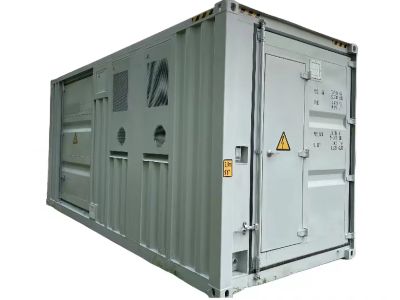Solar power has garnered so much interest for a long time. But did you know that the way we keep the sun's energy from the sun has changed quite a lot over the years? We have used lead-acid battery for solar power storage in the past. We are grateful for these batteries because they saved the energy we managed to collect from our sun and used it when we needed it. But with new technology, we are using LFP batteries for solar energy storage now.
Another good example is lead-acid batteries;
Power from the Sun: Solar cells and windmills are great for using energy from the sun, but storing it is another challenge.Evaluating the importance of lead-acid batteries for solar energy storage, we can see their historic value for helping us to find a way to use power from the sun to save energy:Lead-acid batteries were one of the first types of batteries used to store energy for later usage. They were kludgy an bulky, but they worked well to save energy. For a very long time, people depended on lead-acid batteries to bring solar power into their homes.
The innovative technology that allowed LFP batteries to be incorporated in solar systems is redefinding how power can be stored from solar to prolong the amount of time sunlight will give power to our applications.*
LFP batteries: a lithium, lighter, more effiecient, alternative to lead acid batteries. They can hold more energy, and therefore last longer — good news for people with solar panels. LFP batteries let us save even more sun-energy and use it when and however we want.
If we contrast the advantages and disadvantages of LFP and lead-acid batteries in the solar energy storage aspect
Below into a list, you have a lot more reasons to choose LFPs. They’re also smaller and lighter, which is easier to install in homes. They are also longer lasting, with greater energy storage capacity, than lead-acid batteries. But LFP batteries do tend to have a higher price tag over lead-acid batteries, so keep this in mind as you consider the best battery for your own solar power system.
From the perspective of lead-acid and LFP battery substitution in solar energy storage, LFP is more beneficial to the environment.
These batteries that contain lead substances, generate chemical pollutants that can damage the earth and water, if thrown out. LFP batteries are also cleaner and more environmentally friendly. Choose LFP batteries for solar storage. We can help save the planet for our childre’s, childre’s, childre’s, childre’s...keeping our earth a full cycle & sustainable Earth.
Prospects looks good for LFP batteries to transform the effectiveness and sustainability of how solar energy is stored.
LFP batteries are becoming increasingly efficient and cost effective -- especially with new methods in technology. This would make solar energy accessible to more people to power their homes and businesses. LFP batteries may be the future to democratizing and greening solar power for all.
Table of Contents
- Another good example is lead-acid batteries;
- The innovative technology that allowed LFP batteries to be incorporated in solar systems is redefinding how power can be stored from solar to prolong the amount of time sunlight will give power to our applications.*
- If we contrast the advantages and disadvantages of LFP and lead-acid batteries in the solar energy storage aspect
- From the perspective of lead-acid and LFP battery substitution in solar energy storage, LFP is more beneficial to the environment.
- Prospects looks good for LFP batteries to transform the effectiveness and sustainability of how solar energy is stored.

 EN
EN
 AR
AR
 CS
CS
 DA
DA
 NL
NL
 FI
FI
 FR
FR
 DE
DE
 EL
EL
 IT
IT
 JA
JA
 KO
KO
 NO
NO
 PL
PL
 PT
PT
 RO
RO
 RU
RU
 ES
ES
 SV
SV
 TL
TL
 IW
IW
 LT
LT
 UK
UK
 VI
VI
 HU
HU
 TH
TH
 TR
TR
 AF
AF
 GA
GA
 CY
CY
 IS
IS
 MK
MK
 HY
HY
 AZ
AZ
 KA
KA
 KK
KK
 UZ
UZ

